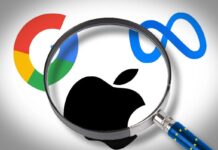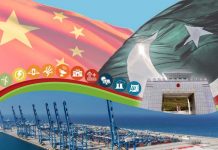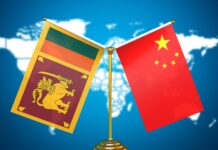Coinciding with Deng Xiaoping’s inspired new modernization design to transform People’s Republic of China around 13 years post the Cultural Revolution turmoil, the first of the Special Economic Zones was established at Shenzhen nearly 40 years ago at the very fag end of the 1970s. Shenzhen then was an insignificant fishing village, in close proximity to Hong Kong – the geographical attribute perhaps tilting the scales in its favour to become the trendsetter.
At the vibrant epicenter of China’s phenomenal growth in manufacturing, Shenzhen in around three decades and a bit today matches top metropolises in the world, the size of its GDP even surpassing those envious exemplars of economic growth in the Far East, Hong Kong, and Singapore.
At the heart of that dazzling expansion are many a successful enterprise, in the process turning Shenzhen into China’s answer to the famed Silicon Valley, its business district presenting high-rises galore, with glass, aluminum and steel structures providing the gleam and sparkle that are symbols of freshly-minted, albeit hard-earned wealth and a technological quantum leap.

Out of a bunch of leading high-tech entities that have driven Shenzhen’s rapid development, Huawei is amongst the topmost. Founded in 1987, by Ren Zhengfei – a former deputy director in the People’s Liberation Army engineering corps – with an investment of $3,500, Huawei has well and truly been transformed into a colossus.
It is now a telecom giant with a global outreach, specializing in cutting-edge technologies, among others in telecom equipment, including smartphone manufacturing, broadband, cloud computing, streamlining enormous data, and what in postmodern parlance is called ‘the internet of things’.
And there is still much more to it!

Nothing gives an individual or an enterprise the kind of sense of arrival than when it begins to inspire awe and fear in equal measure in its competitors. And if those entities happen to be global leaders, brands like Samsung and Apple, with the United States government going out on a limb to thwart you to boot – even if it has to find excuses that the American critics too at best consider lame and wishy-washy – then you have not just arrived, you have indeed gatecrashed into a very select club.
Going by the aforementioned yardstick, Huawei has definitely arrived, and it has in the process created a world-class, cutting-edge product in Huawei Mate Pro 10 that makes market leaders worldwide, Samsung and Apple, green with envy. With its sleek glass-finish look, obtained through its association with Porsche, and innovations – Huawei-developed Kirin 970 processor, a hyper-fast chip which offers the first-ever advanced artificial intelligence one ever, EMUI (emotional-user-interface), and powerful Leica cameras that afford dazzling photos and videography – a bargain at under $1,000 apiece, while its features are infinitely better than Samsung and Apple top-of-the-line brands.

And wary of the most potent challenge to the domestic duopoly of Samsung and Apple that has predominated since 2011, the United States government and its vast and fearsome intelligence network have already made several interventions to keep the Chinese giant out of large scale, unfettered access to the American consumers – after blocking its advanced telecom networking equipment that has found itself a market in 170 countries, including the leading European nations, making it leapfrog over Sweden’s Ericcson as a global market leader.
The pretext: Huawei founder Ren Zhenfei was once, several decades ago, part of the Peoples’ Liberation Army – as an engineer. Hence, the insinuation and innuendo: the potential ‘for the presence of spyware’ and ‘spying for the Chinese government’, ‘eavesdropping in times of peace’ and ‘disabling communication’ in case of a war.
A US-based industry web portal, Android Central’s analysis in a recent post hit the nail right on its head. Under the title, ‘The U.S. government’s beef with Huawei isn’t really about phones’, the expert analyst said: “There are ‘rules’ in place when a foreign country wants to sell electronic or connected products inside the U.S. and UK. The public isn’t privy to the exact details, but there is a rigorous inspection when a device is able to transmit encrypted data to make sure these rules are followed. Huawei has apparently been found to be following them as you can buy their products both here in the States and in the UK’.
For its part, Huawei’s typically Chinese calm riposte, expressed by many amongst its top management, but to Profit by David-Dohyung Kim, Huawei’s director, Global Brand Management [see the accompanying interview]: “We have gained the trust of over 150 million customers in the past year alone, and now sell our devices through more than 45 of the top 50 global carriers.”
This self-assurance is indeed reflected in the numbers. With 154 million handsets shipped out in 2017 alone, compared to 136 million the year before, Huawei is a force to reckon where smartphones are concerned. Its flagship Mate 10 Pro, powered by innovations indigenous to the company [in 2014 Huawei filed more international patents than any other company in the world] is indeed top of the line, outperforming the brace of more established Samsung and Apple in advanced user-friendly technology.

And come to think of it, Huawei had gotten into the smartphones business barely eight years ago when in 2009 it unleashed its first rather ungainly-looking Android handset. Its foray into the high-end luxury variety is a much more recent happening.
And yet at home, it rules the roost, ahead of its domestic competitor Xiaomi and Apple, on the back of its large lineup of smartphones priced modestly but in terms of specifications rivalling high-end phones without the buyer having to break a bank to possess one. (In China, as one witnessed first-hand quite recently, a cellular phone is much more than a communication tool, for it is extensively used for all sorts of payments big and small, banking and shopping included, as well as hail-ride services – from renting a bike to calling over a cab.)
While in Europe too, Huawei has made huge inroads. In Norway, the Nokia country, Huawei sells 10 times more than the once-phenomenal ‘home’ brand.
The latest so-obviously US government inspired attempt to obstruct came in early-January 2018, when Huawei’s planned signing of a deal with AT&T was called off a day before its public signing. For the uninitiated, the US market is dominated by carriers, with upwards of 90 percent purchasing their phones through the networks.
This brings one to the question the influential Forbes magazine had asked almost to date a year earlier: “…to challenge Samsung and Apple, the world’s number three phone-maker needs to figure out how to reach the American consumers – or how to live without them.”

For its part, Huawei’s rejoinder to that for now is to continue doing what it does best: expand in the markets where it can.
When one visited Huawei’s manufacturing and R&D facilities in Shenzhen, even to a non-cognoscenti the scale seemed huge but smoothly-run, efficiently combining human endeavour with robotic proficiency and precision. The R&D part included elaborate and thorough testing of the handsets, in particular, the capacity to survive the most taxing of circumstances and accidents. One actually didn’t know from how many angles a cell phone can crash into the ground until one saw a slew of machines putting it through this and other rigours.
While its Shenzhen headquarters and production and R&D facilities are indeed top-of-the-line, in consonance with all Chinese tech giants having positioned themselves in swank, architecturally unique buildings, Huawei is building itself a completely self-contained city in Dongguan that would outdo most small or medium-sized towns in the developed world.
Shanghai, the most populous cosmopolitan in the world, has since the 19th century been a financial, economic and commercial hub. With its waterfront skyscrapers that sit cheek by jowl with the colonial structures, it remains one of the most happening of Chinese cities. Huawei’s swank and vast network of offices and research centre ensures quality control. In this centre, cell phones go through rigorous final tests. Such as, chargers inserted and reinserted into handsets thousands of times, and bumped and thrown inside automated testing machines, and dozens of automated computers install and reinstall software to make sure that hardware as well as software quality remains consistent even after years of use.
Huawei’s corporate philosophy of laying emphasis on ever expanding the boundaries of cutting edge invention and innovation, not just in smartphones but across-the-board in all of its myriad products, means that it would continue to add to consumer comfort – which in turn shall have direct bearing on increase in sales and market share.
With China so keen to become the tech superpower, this penchant for science-based research and development is not exclusive to Huawei, the futuristic drive is indeed national in scale. According to China Daily, the second-ranked economy in the world is spending 2.1 percent of its GDP on research and development. Huawei has really upped the ante by spending five times that: 10 percent, and occasionally more, of its overall sales revenue, around $75-80 billion in 2017 (which makes it almost equal to Microsoft in size), but it keeps on increasing year-on-year on the basis of mostly double-digit growth. In the last 10 years alone, Huawei devoted $45 billion to R&D.
Impressive statistics these, and, you talk to any Huawei employee – in top-tier management or even a guide or a hostess, and with a measure of unalloyed pride, you would find them flaunting these, with figures rolling off their tongues. Let’s put them in perspective: of its 180,000 employees worldwide, nearly half – 80,000 to be precise – are devoted to R&D at 19 strategically-located centres worldwide, with each of them focusing on one specific strong points of the milieu. For instance, the centre in London, devotes itself entirely to design while the one in India to software development. There are, among others, R&D centres in the US, Sweden, France and China itself – giving it a global tinge.

And Huawei is not limited to producing and marketing handsets and allied consumer stuff. In reality, this aspect is rather new to it, with only less than one third of its revenues generated through the segment. That said, while it remains intent on producing state-of-the-art telecom equipment, it is attempting to conquer new worlds by developing systems that could run safe and efficient cities and services – in totality, with everything that is in it.

And, already having come a long way in establishing itself as a brand synonymous with high-tech invention-based innovation, it is at the same time intent on increasing its consumer footprint across the globe.
Back home in China, the world’s most enormous consumer market, the satisfied citizens and the government itself, take pride in many brands developing worldwide presence – Huawei the foremost amongst them, its status in Pakistan’s context much akin to PIA of a bygone era, when it indeed was, as the late Omar Kureishi’s famous tagline claimed it to be, “A great people to fly with’.
Whether Huawei benefits from any out-of-the-way government assistance remains a point of conjecture, but this ‘pride factor’ makes Huawei Mate Pro 10 the Chinese president’s favourite giveaway gift to visiting heads of state and other dignitaries.
For a nation, that has hankered for a popular global brand of its own all these years, Huawei may have just provided something to own with pride.
























